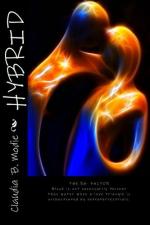|
This section contains 373 words (approx. 2 pages at 300 words per page) |
Classification of Human Blood
For our lab report we have received different scenario's revolving around a hospital baby mix up. For our particular scenario we have two couples, Sean and Jane and Joshua and Katrina. We also have two babies, Baby A and Baby B. It seemed that the hospital had mixed up those two babies and the only way to figure out who's baby was who's was to test their blood types and go from there.
First off human blood is classified, or typed, according to the presence or absence of certain markers (called antigens) on the surface of red blood cells. You can classify people's blood into one of four types: A, B, O, or AB. If your red blood cells have:
If you have the A antigen, you have type A blood. The liquid segment of your blood contains antibodies opposed to type B blood.
If you have the B antigen, you have type B blood. Your blood contains antibodies against type A blood.
If you have neither the A nor B antigen, you have type O blood. Your blood contains antibodies against both type A and type B blood.
If you have both the A and B antigens, you have type AB blood. Your blood does not contain antibodies against either type A or type B blood.
Each of the blood types listed above have different "genotypes." Here are the different genotypes:
Blood type A: IA IA and IA i
Blood type B: IB IB and IB i
Blood type AB: IA IB
Blood type O: i i
Punnet squares are another part in this lab experiment. A punnet squares can be used to for determining the crosses of blood, traits and much more. Letters are designated to each allele. Capital letters are used for dominant traits. Small letters are used for recessive traits. You may also use homozygous and heterozygous. Homozygous are the same and heterozygous are different.
Right now, we have no way of making an appropriate nor accurate hypothesis with the information that we have been given. The question that we are solving the answer to is: Which baby belongs to which parent based on the blood tests we take and the punnet squares that we have?
|
This section contains 373 words (approx. 2 pages at 300 words per page) |


